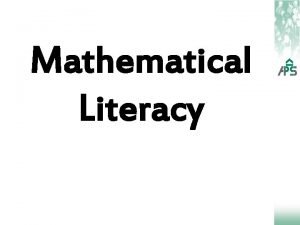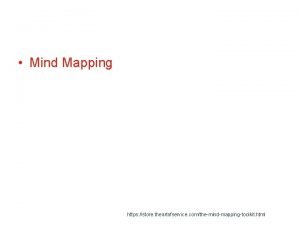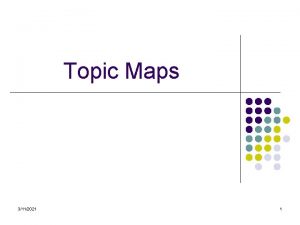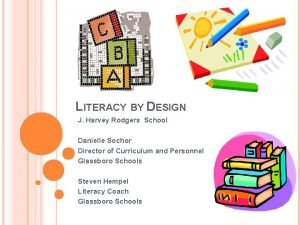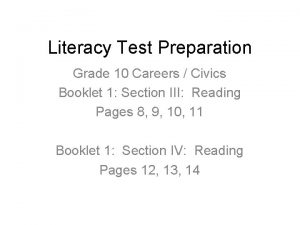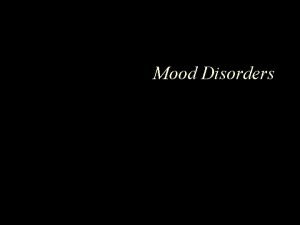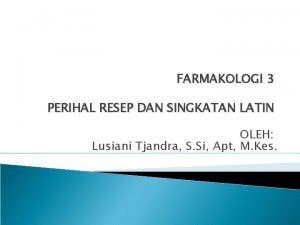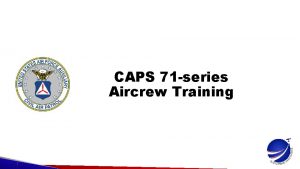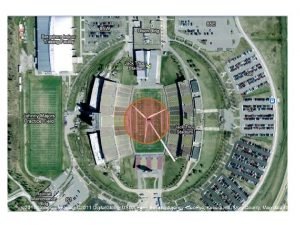MATHEMATICAL LITERACY GRADE 12 CAPS TOPIC 3 Maps





















































- Slides: 53

*MATHEMATICAL LITERACY GRADE 12 CAPS TOPIC 3: Maps, plans and other representations of the physical world Section 3. 5: Maps and Plans (Models)

*Topic 3: Maps, plans and other representations of the physical world. The following sections will be covered: 3. 1. Scale 3. 2. 1 Map Work(1) 3. 2. 2 Map Work(2) 3. 3 Compass Directions 3. 4. Plans (floor, elevation and design plans) 3. 5. Maps and Plans(Models)

*Section 3. 5: Maps and Plans(Models) * In section 3. 5, learners will be able to: ØMake and use 2 -dimensional scale cut –outs or pictures of appropriate views of buildings. ØMake and use 3 -dimensional scale models or drawings of buildings from given or constructed 2 -dimensional floor and elevation plans. ØAnalyse and critique aspects of the layout and/or design of a structure and make suggestions for alterations. ØInvestigate the placement of furniture in a room. ØEstimate quantities of materials needed using area and volume calculations.

*Using 2 -dimensional scale cutouts or pictures of buildings In grades 10 and 11, you dealt with 2 -D shapes like squares, rectangles, triangles and circles. A 2 -D shape or model has only two dimensions, length and width and no depth. You also investigated different techniques for determining the best way to physically package items in a box, in grade 10 and in grade 11 you were shown how to construct a scale drawing of a 2 -D space to investigate how many items can be packed in the space without any need for physical packaging. In grade 12, you are expected to use plans in the context of your daily life, relating to simple and complex structures. Two-dimensional drawings and plans help us to investigate problems and develop solutions for these problems.

* Example 1 Sipho works for a company which builds RDP houses. RDP stands for Reconstruction and Development Programme. Many RDP houses are built for people in South Africa who are in need of housing.

. *Example 1: figure 1

*Example 1 *

5. *Example 1 The following measurements are given below the floor plan in figure 1: External walls = 150 mm, Internal walls = 100 mm Wall height = 2 700 mm An external wall is one of the outer walls of the house and an internal is a wall separating rooms inside a house. By using the values indicated below the floor plan, determine the actual dimensions of the living room. 6. Determine the total number of doors used in the RDP house in fig. 1 7. If the height of the wall is 2 700 mm, determine which wall in the RDP house has the largest area.

*Solutions: Example 1 *

*Solutions: Example 1 *

*Solutions: Example 1

*Solutions: Example 1 *

* Activity 1 Figure 2. Layout of an examination venue.

*Activity 1 a) Determine the maximum number of students that can fit into each examination venue. b) Each window has a vertical height of 1, 4 m and a horizontal length of 1, 8 m. Use the length of a window to estimate the actual length of one desk top. c) Use the actual length of a window to determine the scale of the floor plan in figure 2. d) Determine the total surface area of one window in the examination venue. The windows in this examination venue have to be covered with sunblocking film. The sun-blocking film is sold in sheets of 1, 5 m x 2 m at a cost of R 149, 50. there is an additional installation cost of R 200, 00. Sun -blocking film is stuck onto windows and helps to keep some of the harsh daylight out. Determine the total cost of covering all the windows in this examination venue with sun-blocking film.

*Solutions: Activity 1 *

*Solutions: Activity 1 e) Each window will require one sheet of sun-blocking film. Cost of sun-blocking film for one window = R 149, 50 Cost of sun-blocking film for three windows = R 149, 50 x 3 windows = R 448, 50 Total cost of covering all the widows = R 448, 50 + R 200 = R 648, 50

*Using 3 -D Scale Models or Drawings of Buildings If a shape has three dimensions, namely length, width/breadth and height/thickness/depth, we refer to it as a 3 -dimensional object. In grades 10 and 11, you dealt with cubes, rectangular prisms, cylinders and triangular prisms. When drawing a 3 -D shape you need to determine which view you would like to present.

*Example 2: figure 3 Dr Naidoo and four fellow doctors want to build an office building where they can see patients. The architect proposed a drawing of a 3 -D model of a building shown in figure 3 below.

*Example 2 a) The building has equal length and breadth. If the main entrance door of the building is 2, 5 m high, estimate the height of the building. Keep in mind that the building has three stories. b) Dr Naidoo wants to fit a flat zinc roof on top of the building. If the dimensions of the building are 13 m x 10 m, determine the area of the top of the building. c) The zinc to cover the top of the building is sold in sheets of 15 m x 1, 5 m. Determine how many sheets Dr Naidoo needs to buy to cover the top of the building.

*Example 2 d) 8% of all the outer walls of the building is taken up by windows and doors. If the dimensions of the building are 13 m x 13 m 10 m, determine the outside wall area which needs to be painted. e) If one litre of paint covers 9 square metres, determine how many litres of paint are needed to cover the whole building with one layer of paint. f) Determine how many tins of paint must be bought to cover the whole building if paint is sold in 10 -litre tins. g) The cost of one 10 -litre tin of paint is R 200, 50. Use the answer for question f) to determine the cost of the paint needed to cover the whole building.

*Solutions: Example 2 *

*Solutions: Example 2 *

*Activity 2: figure 4

*Activity 2 a) How many people can comfortably sit in the dining area? b) The two wooden doors of the cupboard used to store plates(C) have to be painted. The height of the doors is 2 m and the breadth of each side is 1, 6 m. Determine the area of the doors that needs to be painted. c) If one litre of wood paint covers 4 square metres, how many litres of paint are needed to paint the two doors? d) Ingrid wants to apply two layers of paint to the doors of the cupboard in Question b). Determine the total cost of paint needed if one litre of paint costs R 149, 25.

* *Solutions: Activity 2

*Critiquing(analysing) aspects of the layout and/or design of a structure and making suggestions for alterations To critique something is to judge or review something. When critiquing something you have to say what you think about it and make suggestions on how change or improve it. In grade 12 you will be expected to critique certain objects and ideas and give suggestions on how to improve it.

*Example: 3 The model in figure 5 on the next slide shows a new way to park cars, called Tri-stack. Each car drives into a parking space which can be elevated, so that eventually three cars can fit into the parking space. a) The director of a company decides to build 18 of these Tri-stack parking spaces in a parking lot. How many cars will fit into the new parking lot? b) Two Tri-stack parking spaces cost R 47 200 to build. Determine the cost to build 18 of these Tri-stack parking spaces. c) Do you think that this type of parking will be effective at a shopping mall? Give a reason for your answer.

. *Example 3: figure 5

*Solutions: Example 3 a) 3 X 18 = 54 cars. b) 18/2 = 9, then 9 x R 47 200 = R 424 800. c) It will not be very effective to build Tri-stack parking spaces at a shopping mall, because people parked will not be able to leave until the people below have removed their cars.

*Investigate placement of cupboards and other furniture in a room. Many people are overwhelmed with possibilities when it comes to arranging furniture in an empty room. Here are the important factors to consider when placing or moving furniture in a room: § Identify entrances and direction in which doors open. § Make sure that you not block spaces which could have been used more effectively. § There has to be space open in front of a television in order for people to watch television. § Allow room around at least one side of a bed. § Take the function of a room into consideration. § Do not place furniture in the pathway area.

. *Example 4: figure 6

*Example 4 Nico makes a scale drawing of his living area and dining room and draws the layout as shown in figure 6 on the previous slide. a) Nico arranged the television, speakers and other electronic devices in a curve facing the couches. Explain why this can be a problem. b) Nico decides to purchase another single easy chair. Redraw the perimeter of the floor plan and rearrange the couch and chairs, including the one he wants to buy.

*Example: 4 c) Give two possible reasons why the television is not placed on the opposite side of the living area. d) Nico buys a large round flower pot with a plant in it. The diameter of the flower pot is 40 cm and the height of the plant is 1, 5 m. Give three possible places to put this pot.

*Solutions: Example 4 a) It is very easy to bump a toe or other objects against the speakers and electronic devices if they are not placed in a straight line, close to the wall. b) See next slide for a possible solution. Any other possible way is also correct. c) -If the television is placed on the opposite side of the living area, the sun will shine through the window above or next to the television. This makes it very difficult to focus on the image on the screen. -the plug is possibly situated on the one side only. -if the couches are moved to the opposite side it will be difficult to move through the living area.

*Solutions: Example 4

*Solutions: Example 4 e) -Behind an easy chair. -Next to the wall, opposite the dining room. -In the corner of the dining room, opposite the entrance.

*Final Assessment Questions 1 -10

*Final Assessment Questions 1 -10 The Blossom Hospital care unit in figure 7 on the next slide is a facility with nurses and doctors who look after sick people. All the rooms indicated on the floor plan are for patients, unless it has a code in it. A standard room is 6 m x 6 m and can accommodate four patients. The larger rooms are double the size of a standard room. Use the floor plan to answer Questions 1 -5.

*Final Assessment Questions 1 -10

*Question 1 *How many rooms in this hospital care unit are allocated to adults? A. 54 rooms B. 48 rooms C. 60 rooms

* Question 2 How many patients can fit into a larger room? A. 4 patients B. 6 patients C. 8 patients

*Question 3 *

*Question 4 Determine the total number of patients who can be accommodated at the Blossom Hospital care unit if the trauma room can fit 16 patients. A. 312 patients B. 400 patients C. 600 patients

*Question 5 *

*Questions 6, 7 and 8 Maggie is renovating her house and plans on tiling her balcony. Figure 8 is a floor plan of the house and the balcony. Use this plan to answer questions 6, 7 and 8.

* *Questions 6

*Questions 7 Determine the cost of the tiles needed to tile the balcony, if tiles are sold for R 47 per square metre. A. R 528, 75 B. R 514, 65 C. R 728, 50

*Questions 8 The cost of the labour to tile the balcony is R 250 and the grout used between the tiles costs R 20 per square metre. Determine the total cost of tiling the balcony. A. R 1003, 75 B. R 983, 65 C. R 1 288, 50

*Questions 9 and 10 *

*Questions 9 and 10

*Questions 9 *

*Questions 10 *

*Solutions Final Assessment Questions 1. A 2. C 3. B 4. A 5. C 6. A 7. B 8. B 9. C 10. A
 Elevation map grade 12 maths lit
Elevation map grade 12 maths lit Types of maps in mathematical literacy
Types of maps in mathematical literacy Scales maths lit
Scales maths lit Strip map mathematical literacy
Strip map mathematical literacy Grade 11 mathematical literacy finance questions
Grade 11 mathematical literacy finance questions Finance grade 11 maths lit
Finance grade 11 maths lit Maths literacy grade 10 finance
Maths literacy grade 10 finance Mathematical literacy grade 10 measurements
Mathematical literacy grade 10 measurements Conversions in maths lit grade 12
Conversions in maths lit grade 12 Packaging mathematical literacy grade 12
Packaging mathematical literacy grade 12 Exchange rate maths literacy
Exchange rate maths literacy Measurement maths literacy grade 12
Measurement maths literacy grade 12 Mathematical literacy grade 10 measurements
Mathematical literacy grade 10 measurements Mathematical literacy grade 10 measurements
Mathematical literacy grade 10 measurements Caps topic
Caps topic What is mathematical economics
What is mathematical economics Google maps reittihaku
Google maps reittihaku Maths literacy level 3
Maths literacy level 3 Mathematical literacy finance
Mathematical literacy finance Difference between mathematics and mathematical literacy
Difference between mathematics and mathematical literacy Multi-cultural literacy
Multi-cultural literacy M i l subject
M i l subject What are the advantages and limitations of people as media?
What are the advantages and limitations of people as media? Cyber literacy for the digital age
Cyber literacy for the digital age Semantic web layer cake
Semantic web layer cake Topic maps
Topic maps Topic maps
Topic maps Topic maps
Topic maps Clueing topic sentence
Clueing topic sentence Narrowing down a topic exercises
Narrowing down a topic exercises Literacy by design grade 2
Literacy by design grade 2 Financial literacy grade 4
Financial literacy grade 4 Grade 10 literacy test
Grade 10 literacy test Next generation personal finance standards
Next generation personal finance standards Visual literacy grade 10
Visual literacy grade 10 Grade 5 financial literacy
Grade 5 financial literacy Next generation personal finance standards
Next generation personal finance standards Caps saude mental
Caps saude mental Sig e caps
Sig e caps Contoh resep obat hewan
Contoh resep obat hewan Sig e caps
Sig e caps Gplms grade 3
Gplms grade 3 Sigicaps
Sigicaps Fiu caps
Fiu caps S 3 dd caps 1
S 3 dd caps 1 Sig e caps
Sig e caps Orientation definition math
Orientation definition math History fet caps
History fet caps Caps 71-1
Caps 71-1 Spar cap
Spar cap Caps and floors
Caps and floors Abridged caps document
Abridged caps document Sigecaps questions
Sigecaps questions Get your thinking caps on
Get your thinking caps on



















